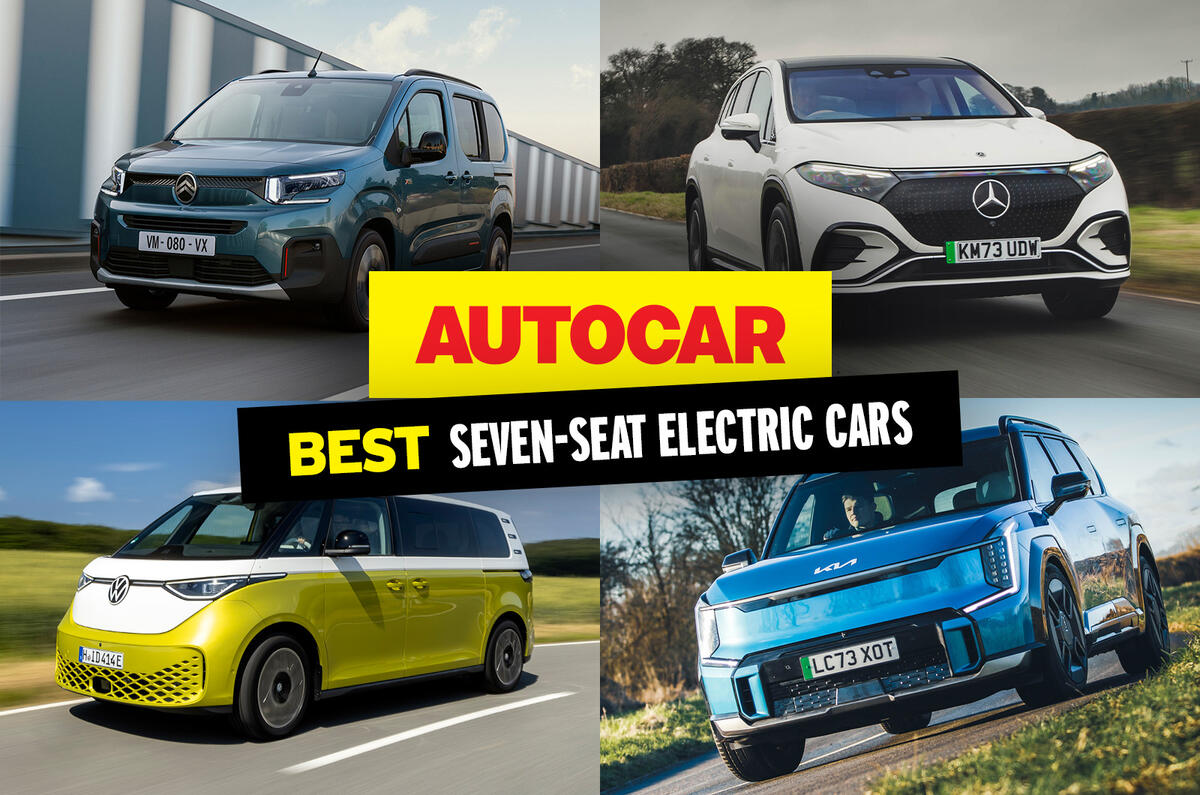The best seven-seat electric cars – driven, rated and ranked
Seats for all the family and an electric powertrain is now an increasing viable option

News
by Richard Lane
5 mins read
15 July 2024
Share
The fact that we can now assemble (well, just about) a credible selection of the best seven-seat electric cars around is an indication of how far the EV segment has come in recent years.
Not so long ago, if you wanted a third row of seats in your family car, your options were limited to a reasonably small selection of petrol or diesel SUVs and MPVs.
These days, electric alternatives are being offered by makers from Kia to Tesla, and Volvo to Citroën.
In truth, one or two of the cars below don’t quite make it to seven-seat status – they make do with six – but all give their owner better than usual people-carrying capacity.
Because of their size, many of these cars exist at the more expensive end of the spectrum, but there are some keenly priced options as well. Let’s dive in.
1. Kia EV9
8
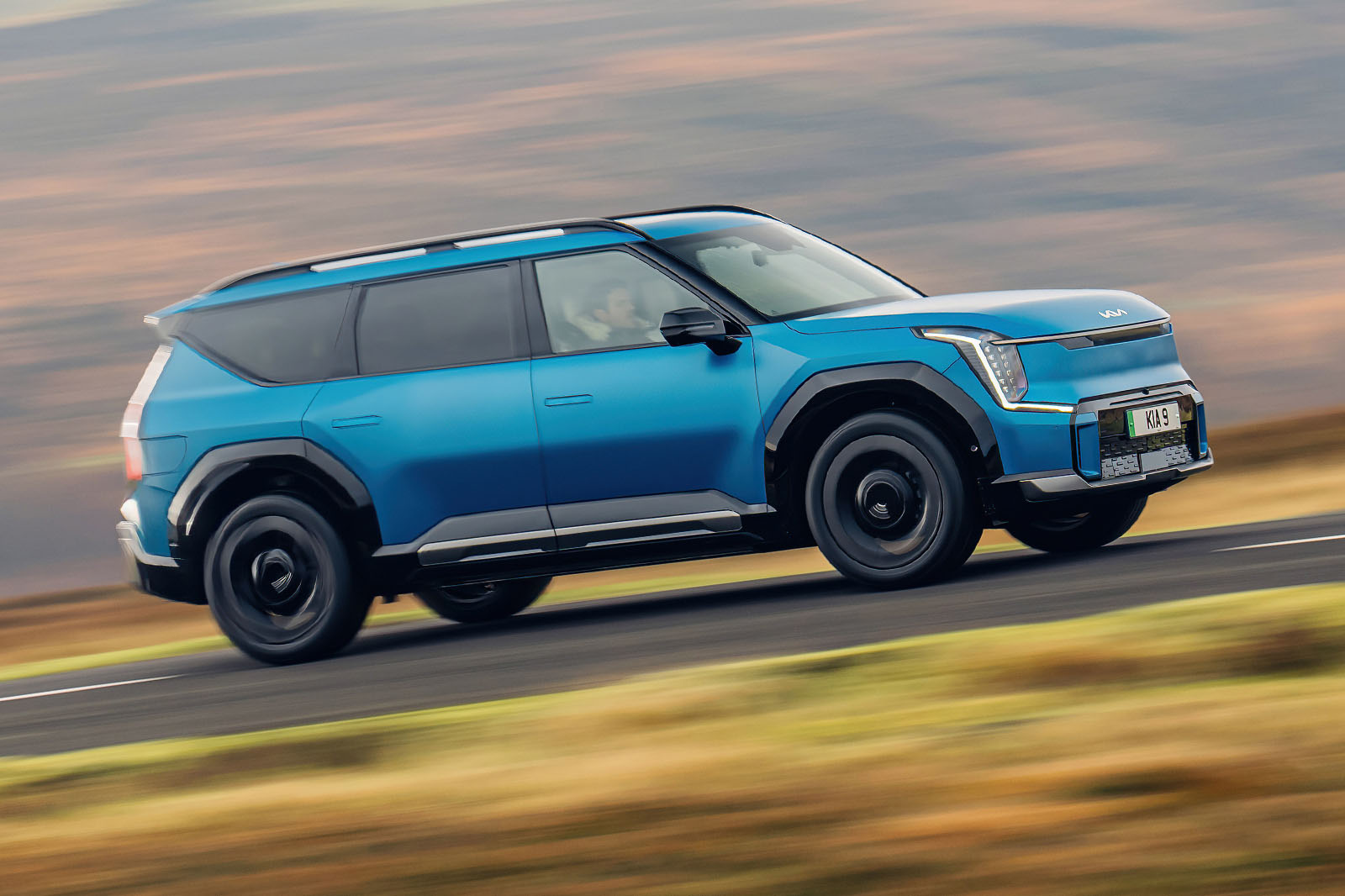
Pros
Bold and distinctive design provides strong kerbside presence
Large, versatile interior has all the space you could really want
Strong electric range and excellent rapid-charging speed bolster usability
Cons
Feels bigger and heavier on the road than key rivals
Lacks a degree of easy car-park manoeuvrability
Material cabin appeal is slightly short of the £70k luxury standard
Some may baulk at the thought of a near-£70,000 Kia, but the EV9 mostly delivers on its ambitious task of pushing the South Korean brand further upmarket than ever.
It is also an immensely practical electric car, with abundant interior space, good performance, no small degree of perceived quality and luxury, plus decent efficiency and driving range.
The third-row seats aren’t as spacious as those ahead of them, but they are creditably plush and comfy for smaller adults – children will be absolutely fine.
There’s also a reasonable amount of boot space if you do have all seven seats in place – as you’d expect with a car that’s more than five metres long.
Read our Kia EV9 review
Save money with new Kia EV9 deals from What Car?
Finance this car with Drivenfi
Latest Reviews

Volvo V90
8

Alpine A390 prototype review

Tesla Model Y

Used Fiat Panda 2012-2024 review
8
Used Fiat Panda 2012-2024 review

Renault 5
9
Back to top
2. Peugeot e-5008
8
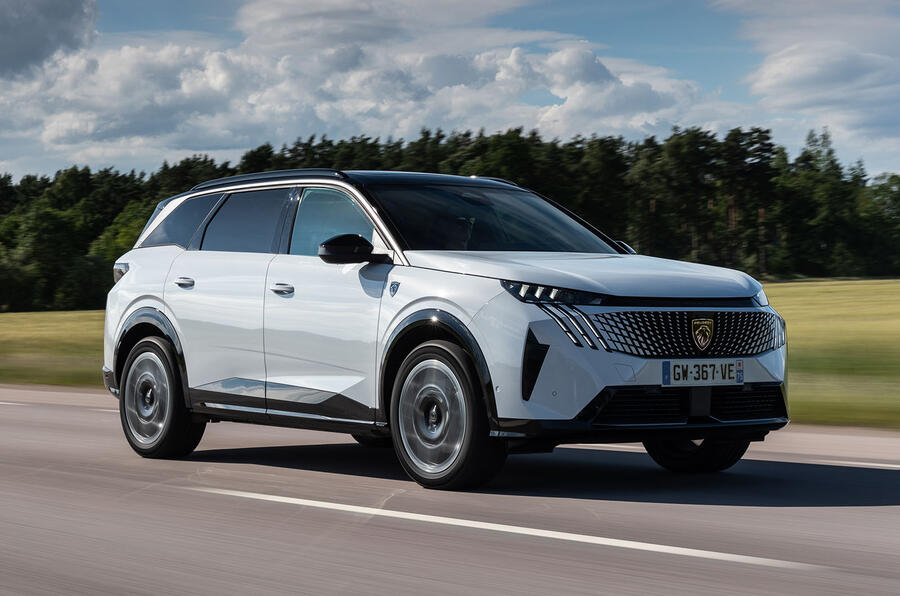
Pros
Spacious, versatile, appealing interior
Assured and slick to drive
Efficient
Cons
Exterior design has a few unflattering angles
Doesn’t compete with the EV class’s sportier options
The e-5008 isn’t the prettiest of Peugeot’s rather good-looking current line-up, but it’s one of the better cars to drive.
This big seven-seater packs either a 73kWh battery with 311 miles of range or a much larger, 96kWh battery with 410 miles of range.
You can also choose between single-motor and dual-motor, all-wheel-drive set-ups, offering 211bhp and 318bhp respectively.
We think the e-5008 is spot on for what it needs to be and has all the versatility and technology that the average buyer of a seven-seat car will want.
Inside, it’s smart and it feels quite premium. It’s not too big and it doesn’t come across as obnoxious.
Read our Peugeot e-5008 review
Finance this car with Drivenfi
3. Volkswagen ID Buzz
8
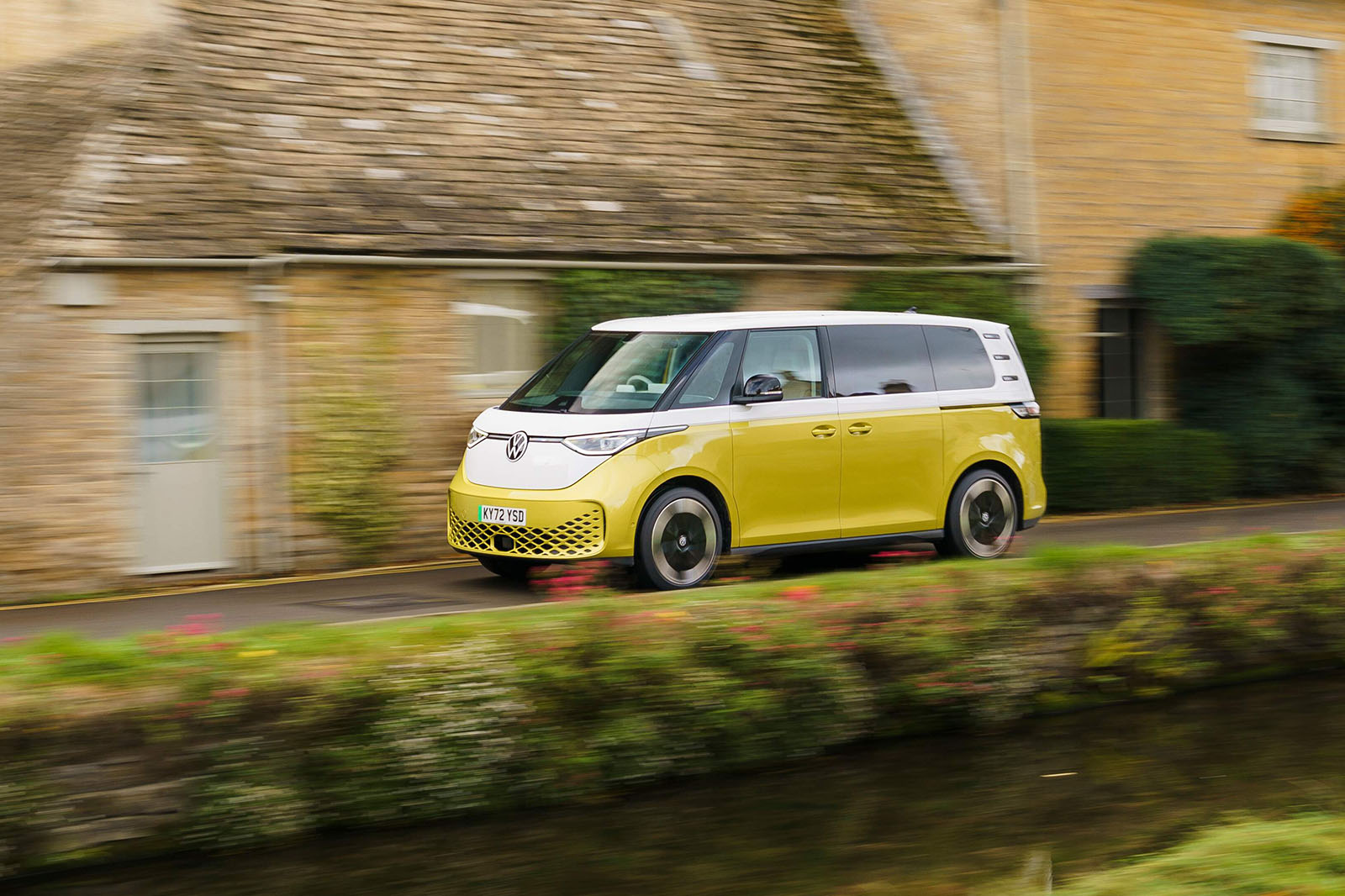
Pros
Comfort and passenger space
Refinement and touring manners
Just enough VW Type 2 charms
Cons
High price will limit accessibility
Lacks clever cabin modularity
It might not be big by commercial market standards but it could certainly be smaller
Volkswagen’s reinvention of the Type 2 camper van for the electric era is a touch larger and more expensive than some would have expected, but it packs plenty of charm and refinement and has a good driving range in the context of such cars.
For seven seats, you’ll need the long-wheelbase version, with its 250mm of extra bodywork between the axles. In LWB form, the ID Buzz can also have a bigger, 86kWh battery.
It offers a claimed range of up to 286 miles and gets paired with a new 282bhp electric motor. That helps to make the ID Buzz LWB, in our opinion, the pick of the range.
A touch more modularity regarding interior layout would be nice, but it’s the ID Buzz’s road manners, drivability and upmarket ambience that impress us most.
Read our Volkswagen ID Buzz review
Save money with new VW ID Buzz deals from What Car?
Finance this car with Drivenfi
Back to top
4. Tesla Model X
8
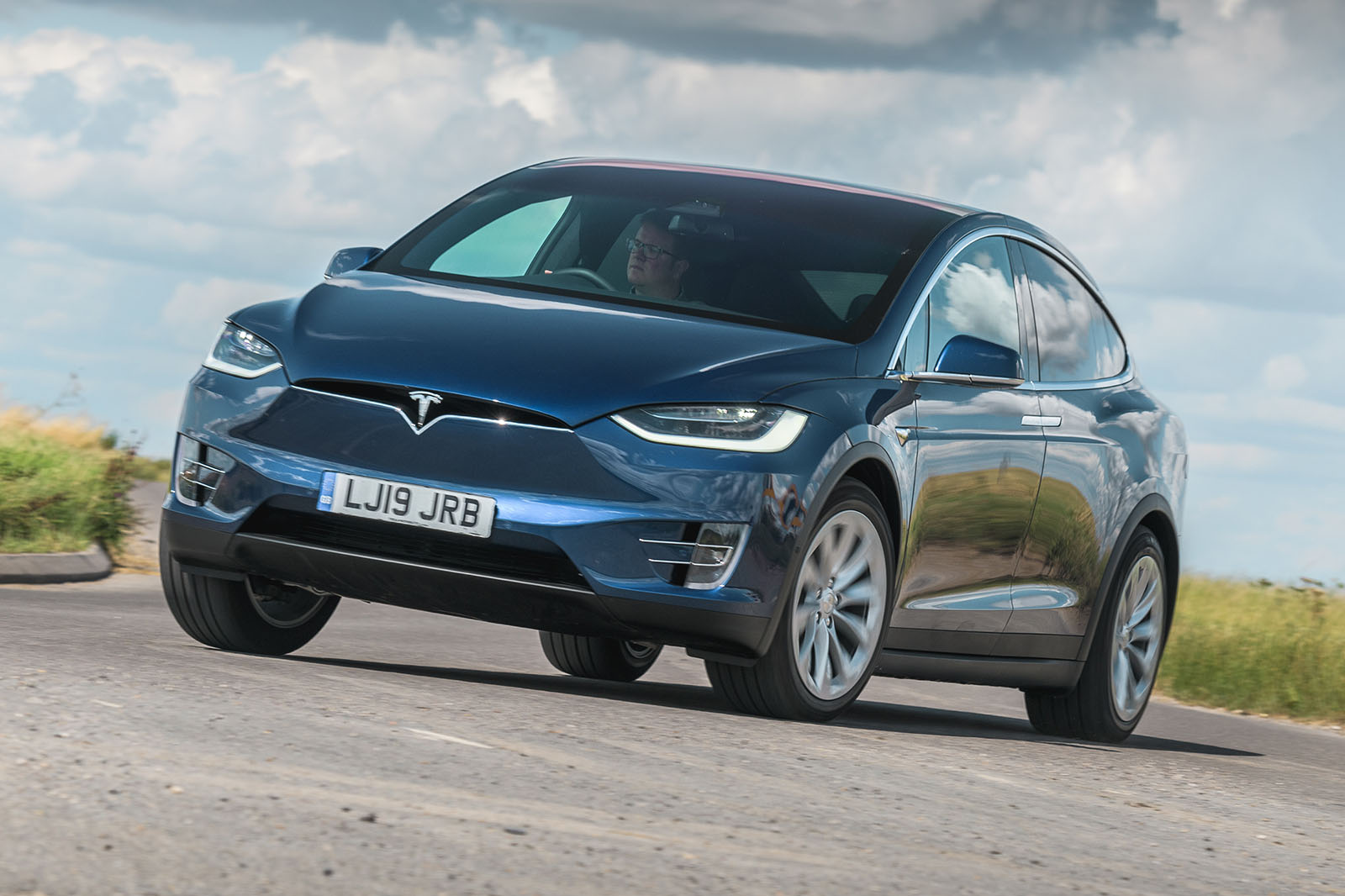
Pros
Wanton all-round cleverness
Genuinely spacious interior
Effortless pace
Cons
Patchy UK availability
Some rival handle more sweetly
Build quality still questionable in parts
The Model X is Tesla’s largest and most expensive car, and it’s also a stalwart of the seven-seat EV scene, having been around since 2017 – although it’s currently off sale in the UK.
It remains an extremely capable machine, being shockingly quick in certain guises and in possession of surprisingly crisp handling, not to mention a light and airy cabin that puts passengers at ease.
It may weigh 2.5 tonnes, but its muscular 611bhp powertrain still allows it to blast from 0-62mph in 3.2sec. Few large electric cars have since been able to match that supercar-esque performance.
Save money with new Tesla deals from What Car?
Finance this car with Drivenfi
5. Mercedes-Benz EQB
7

Pros
Genuine seven-seat versatility
Comfort-biased tuning and towing capability stand out in EV segment
Design is more appealing, and more recognisably Mercedes, than other EQ models
Cons
It’s pricey
It’s heavy
It doesn’t offer the electric range of key rivals
The EQB is a nicely packaged crossover with good levels of comfort and luxury appeal. A sliding second row of seats also means that leg room for passengers in either of the two rear rows can be divided out, as you prefer.
As is often the case with Mercedes’ electric models, pricing feels on the high side, and while the EQB’s real-world range of 200 or so miles felt tidy enough in 2022 when the car launched, it is at risk of looking underwhelming today. The same applies to fast-charging capability.
Nonetheless, the EQB ride wells, steers sweetly enough and does indeed have space for seven.
Read our Mercedes-Benz EQB review
Save money with new Mercedes EQB deals from What Car?
Finance this car with Drivenfi
Back to top
6. Mercedes-Benz EQS SUV
7
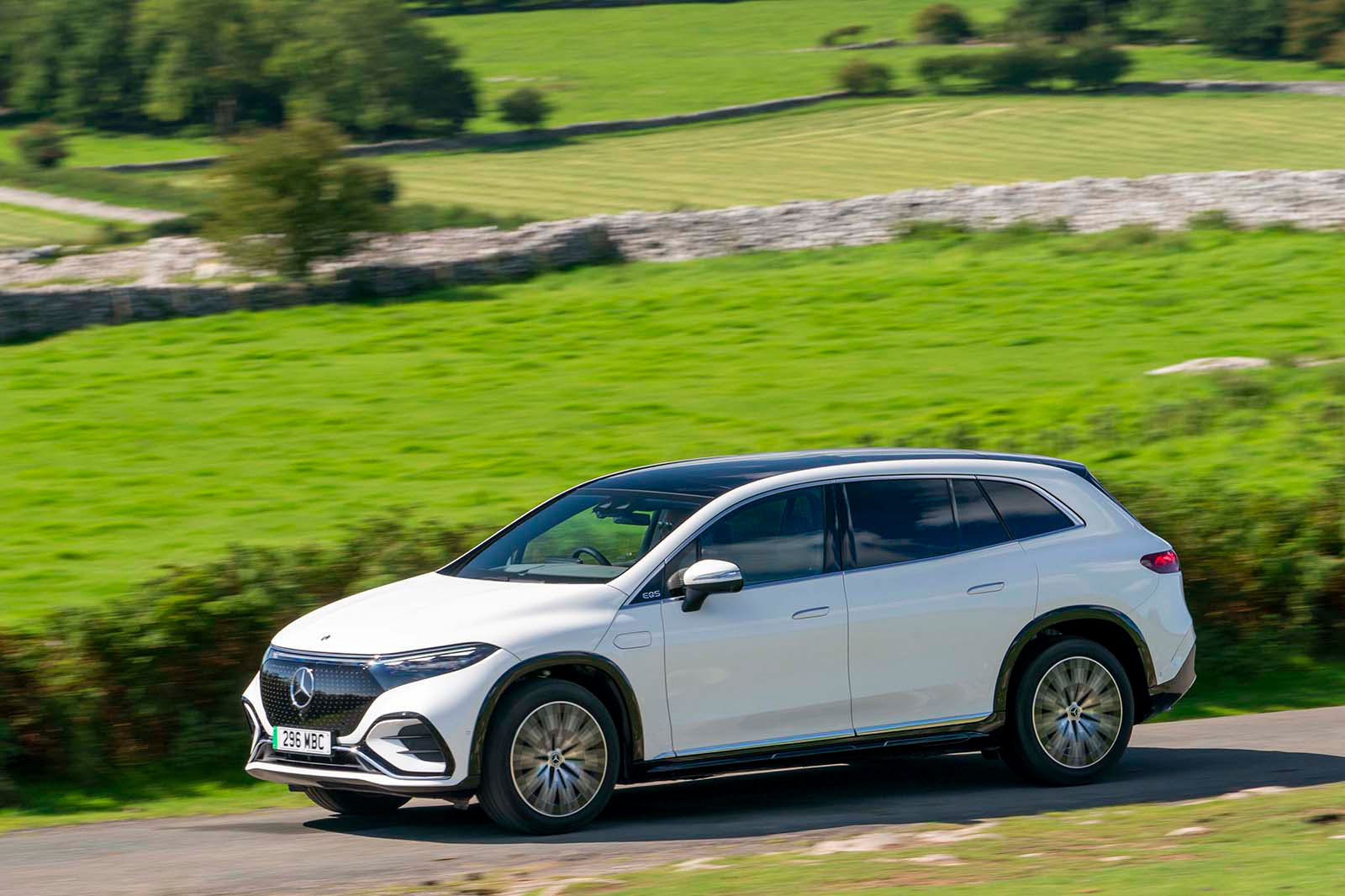
Pros
Decent efficiency and enormous battery result in long range
Very relaxing on long distances
Hugely spacious
Cons
Interior doesn’t have the versatility of the best seven-seaters, nor the opulence of the best luxury car
Low-speed ride is quite poor
Very expensive
The most rarefied car on this list is the SUV version of Mercedes’ EQS limousine. It’s a superbly relaxing car over long distances, which it manages to undertake thanks to a mixture of good powertrain efficiency and an enormous battery. Effortless performance is also part of the deal.
That the EQS SUV doesn’t rank higher here is down to two things: its high price and its relative lack of cleverness when it comes to cabin layout.
Leg room in the third row is often compromised if second-row passengers want a reasonable amount themselves.
The floor is also quite high in relation to the seat bases, though for children this isn’t a problem.
Read our Mercedes-Benz EQS SUV review
Save money with new Mercedes EQS SUV deals from What Car?
Finance this car with Drivenfi
7. Mercedes-Benz EQV
7
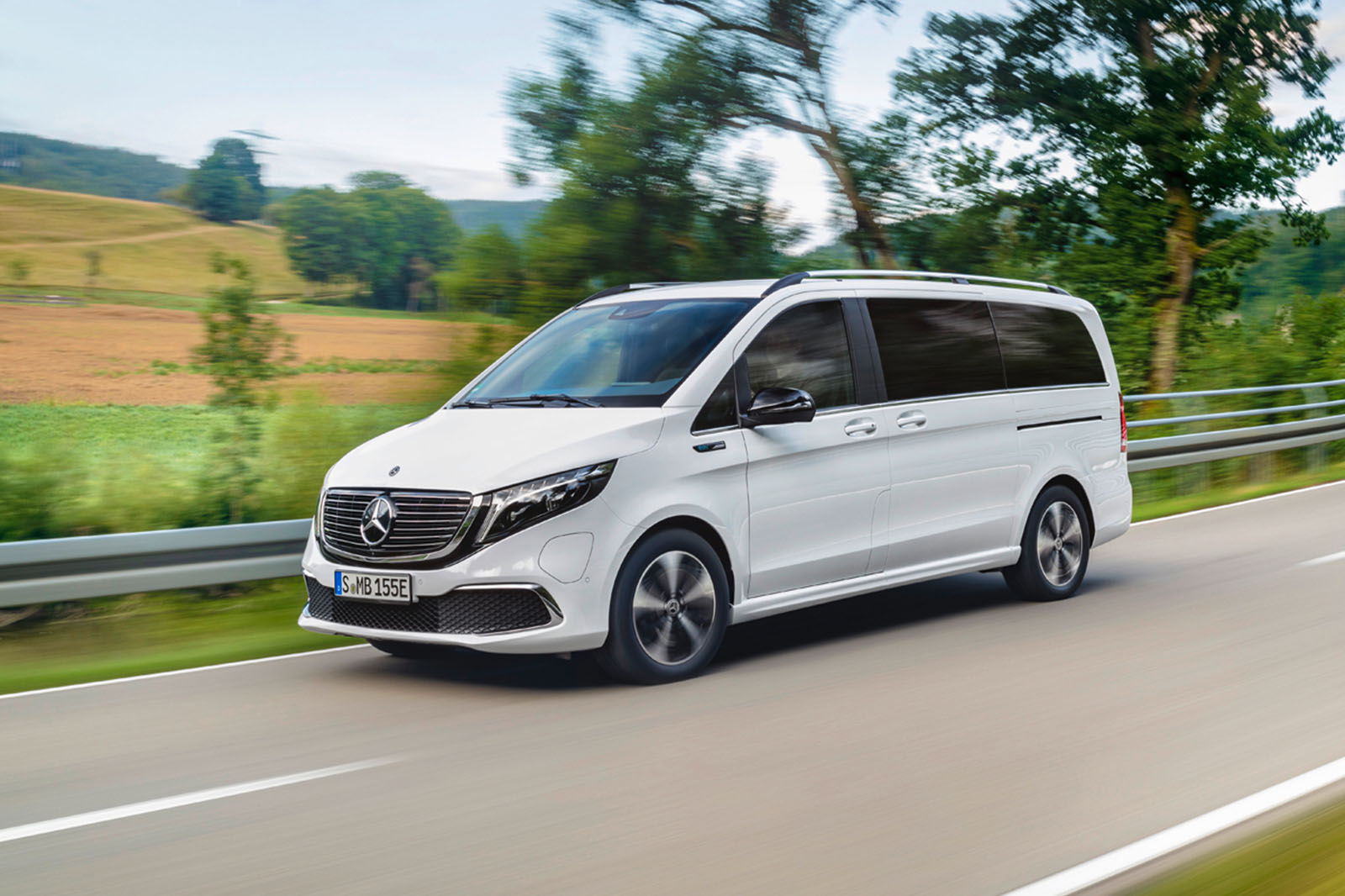
Pros
Superbly quiet and smooth at times
Nicely calibrated driving controls
The usual V-Class luxury ambience
Cons
It costs nearly £100,000 in basic form
Charging speed is nothing special
Mercedes’ electric van is intended more for VIP airport transfer than family life, but it’s worth considering because a recent facelift has updated the infotainment system to the same high standard as the passenger car range.
The EQV is also far more comfortable and lavish than your average van-based people-carrier and, of course, offers truly cavernous space for passengers and luggage alike.
However, the hidden strength of the EQV is its refinement and drivability. This is a big car – the biggest on this list – but it’s easy to place on the road and offers both driver and passengers superb visibility.
Read our Mercedes-Benz EQV review
Save money with new Mercedes EQV deals from What Car?
Finance this car with Drivenfi
Back to top
8. Citroën ë-Berlingo
6
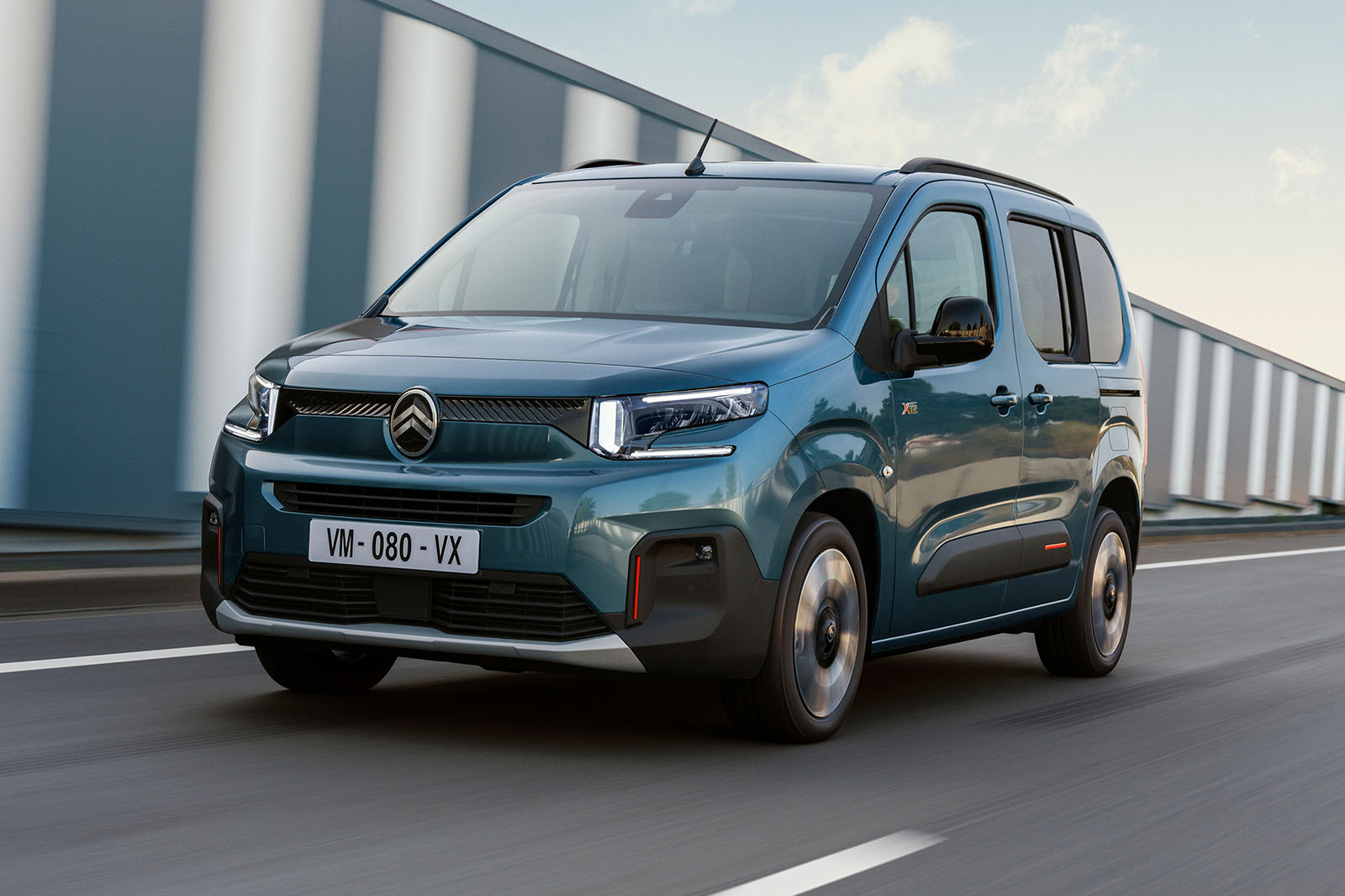
Pros
Surprisingly neat dynamics
Incoming facelift improves range
Superbly versatile and spacious interior
Cons
Material quality isn’t always up to scratch
Real-world driving range limits usability
Citroën’s popular Berlingo has recently been given a wholehearted design makeover, with the electric ë-Berlingo also gaining a bit of extra range to address the car’s conspicuous weak spot.
The new 54kWh battery isn’t enormous by passenger car standards, but for the sort of work the typical ë-Berlingo does, 198 miles of official range should, Citroën hopes, suffice.
Elsewhere, the ë-Berlingo has the same immense cabin space and versatility as ever. Ride quality is also better than you might expect, even when the car is unloaded. It’s a charmer.
Save money with new Citroen e-Berlingo deals from What Car?
Finance this car with Drivenfi
9. Peugeot e-Rifter
6
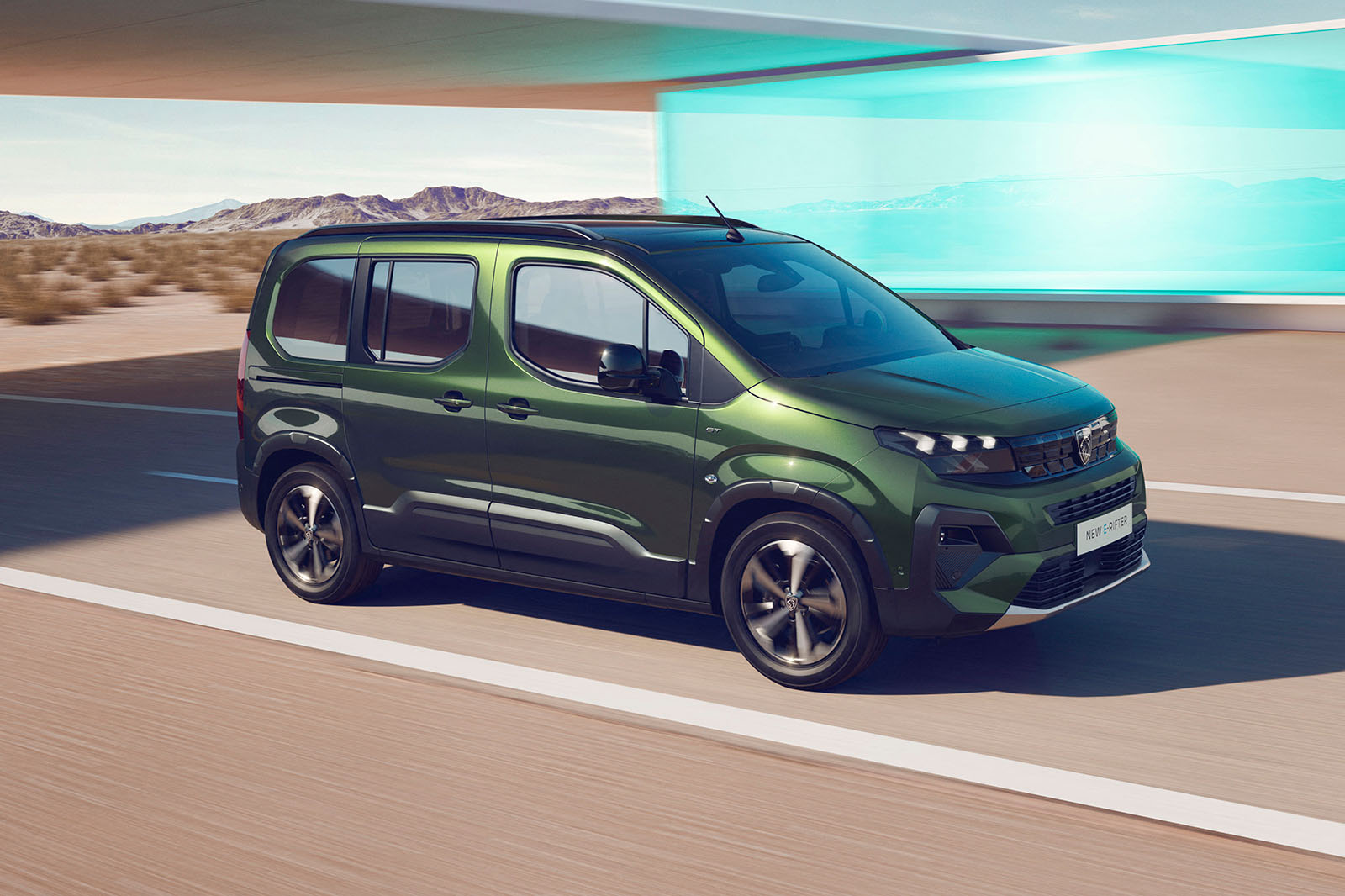
Pros
Great practicality
No performance penalty compared with the petrol Rifter
Cons
Range not good enough
Ride quality
The e-Rifter is closely related to the ë-Berlingo but in our experience doesn’t ride quite so nicely and doesn’t yet benefit from the bigger battery, meaning its official range is pegged at a modest 173 miles.
It is nonetheless supremely roomy and versatile, with modular seats that can be folded down individually or removed entirely.
Save money with new Peugeot e-Rifter deals from What Car?
Finance this car with Drivenfi
Back to top
10. Volvo EX90 (coming soon)
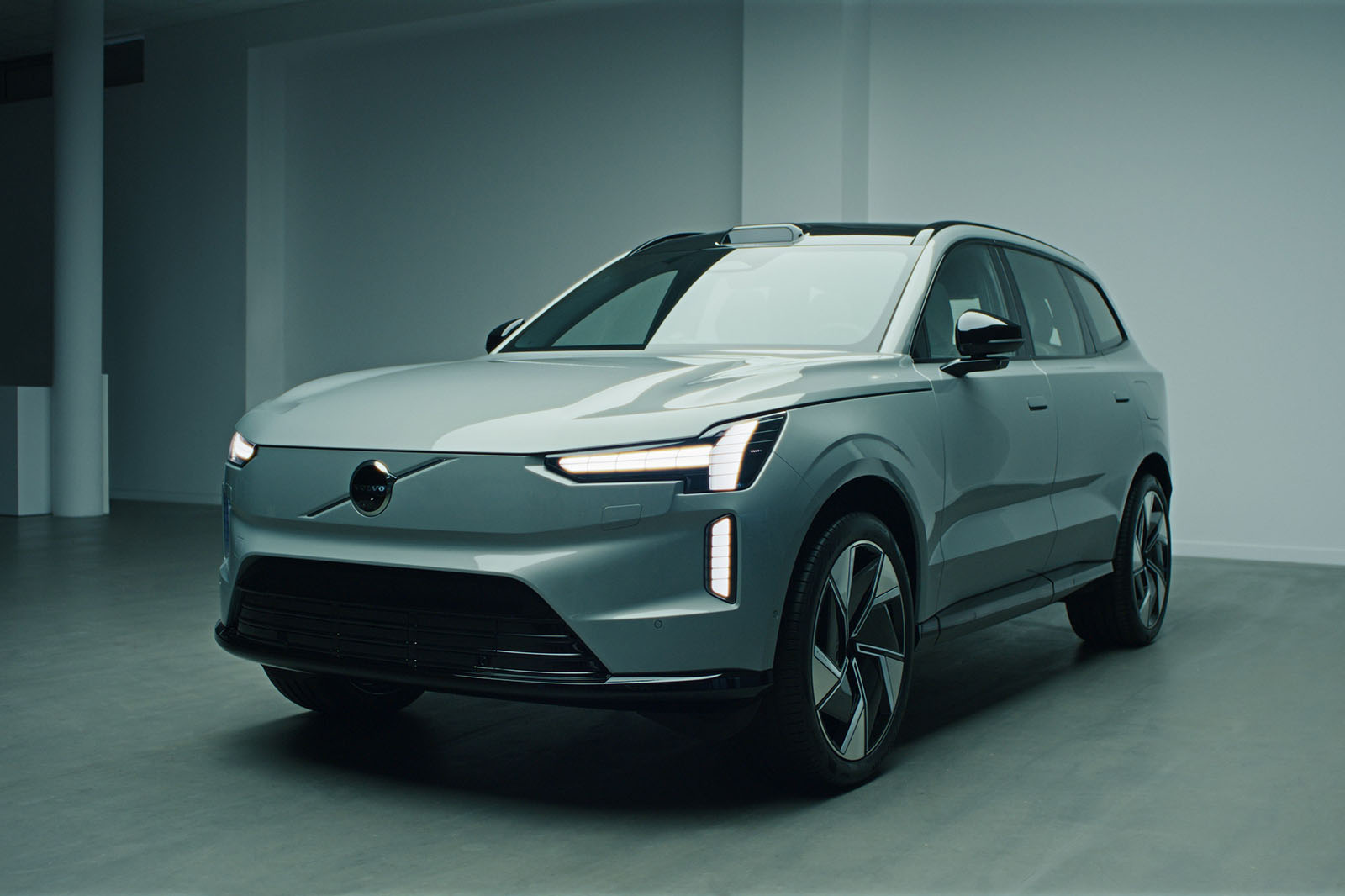
The EX90 is one of the most hotly anticipated full-size electric SUVs. Indeed, it’ll be Volvo’s flagship model when it arrives later in 2024.
As such, it won’t come cheap – tick an option box or two and you’re looking at six figures in the UK – but expect luxury road manners and a fabulous cabin.



